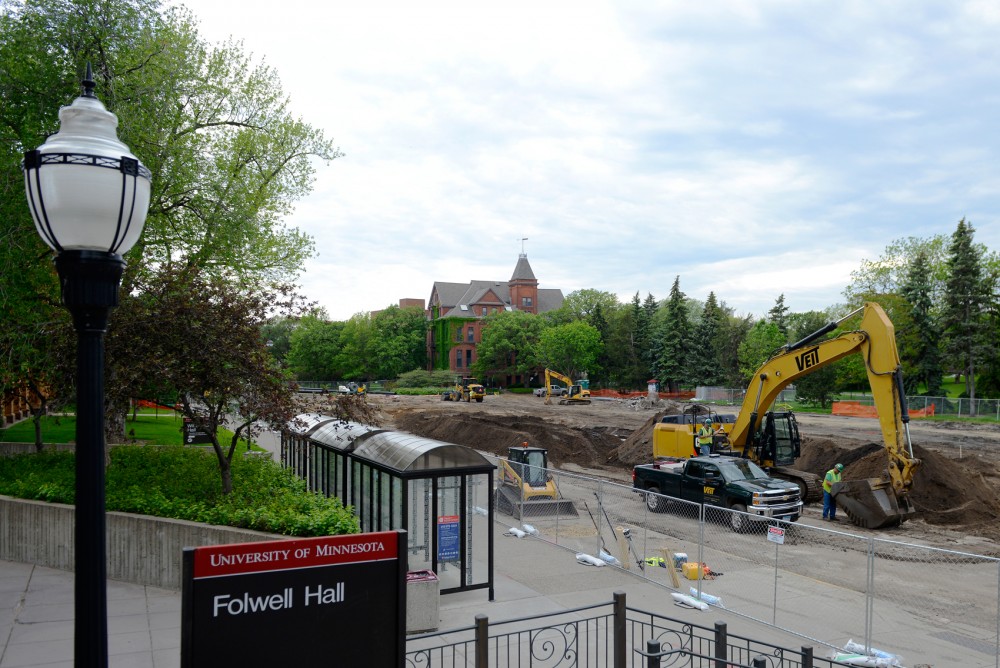One of the University of Minnesota’s main roads will have a new look come fall.
In addition to the University’s original goal to repave the Pleasant Street Corridor — heavily frequented by bicyclists, pedestrians and vehicles — the school is tying
in other changes, including dedicated bikeways, tree removal and new storm water management systems in a $4.4 million project set to be complete Aug. 28.
The main rationale for the project was a need to fix the deteriorating road, said Kevin Ross, senior project manager for Capital Planning and Project Management.
“It’s a fairly straightforward road maintenance project, but it provides the opportunity to do some other things at the same time,” Ross said.
New bike lanes
One of the additional changes to the area is a widened road to accommodate a six-foot bicycle lane. Before the construction, bicyclists and vehicles shared the street.
Having better-defined bike lanes is meant to increase safety for cyclists, though the area isn’t a hot spot for bike accidents, said University Services spokesman Tim Busse.
Cinema and media culture studies senior Ben Swanson bikes on the road every day and said he has always felt safe while sharing the roadway with vehicles.
“I could see how it’s not as separated as some may like, but how it was wasn’t bad, either,” Swanson said.
The lanes will run both north and south between the sidewalk and roadway from the circle to the intersection of Pleasant Street Southeast and Arlington Street.
Out with the ash trees
As part of the construction, the University is removing 52 trees, most of which are ash. The removal is part of the University’s policy on combating emerald ash borer, an insect responsible for killing millions of ash trees throughout the continent.
The trees weren’t infected with the bug, Ross said, but when larger projects are taking place on campus, the University uses those as opportunities to remove surrounding ash trees and replace them with different species.
Cutting down the trees along Pleasant Street Southeast won’t halt the emerald ash borer infestation occurring across the state, said University Extension entomologist Jeffrey Hahn.
“Removing the trees won’t stop the spread, but you won’t have to treat it later,” Hahn said, adding that people are often responsible for spreading the insects through firewood.
Ash trees can be treated with insecticides that have proven to slow the bugs’ expansion, but Hahn said this is an expensive measure.
Though the University has used the insecticides in the past, officials use any opportunity to remove ash trees in conjunction with other projects, Busse said.
A variety of trees, including maple, Kentucky coffee and gingko were chosen to diversify the area and avoid disease in the future.
Watering trees, naturally
The reconstructed roadway will also feature new technology designed for watering the trees.
A bioretention basin, a shallow collection device used to slow and filter storm water runoff and hydrate the surrounding soil, will clean water before it is soaked up by surrounding trees.
Officials added the new storm water management because new regulations require storm water to be processed on- instead of off-site, Ross said.

















